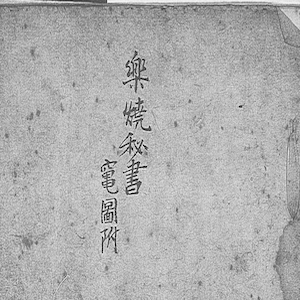Meiji Japan
Meiji Japan provides digital access to the papers of Edward Sylvester Morse (1838-1925), the renowned polymath, notable for his work in natural history, ethnography and art history. Morse was one of the first Americans to live in Japan, he taught science at the Imperial University of Tokyo, and he is most famous for his work in bringing Japan and the West closer together. This collection contains Morse's digitized personal and professional papers from the Peabody Museum, including diaries, correspondence, research files, sketches, lecture notes, publications, scrapbooks and manuscripts.
The home page lists five tabs at the top of the screen: "Introduction", "View All Documents", "Popular Searches", "Searching Guide", and "Researching Tool" as well as providing a simple search bar that allows users to quickly find particular topics or resources via a keyword search. The core section in this collection is the "View All Documents" section, which provides 1061 digitized documents. Users can browse the collection according to date and seventeen different categories, ranging from maps, diaries, scrapbooks, to financial records, and visual materials. Clicking on each document will bring up a range of items, with each item being accompanied by a short write-up and a high-resolution photo of the item in question. For teachers, the site offers three especially useful sections: the first one is the "Popular Searches" section, which allows users to search documents and narrow their results by a range of terms, including: correspondents, topics, and publications by Morse, etc. Teachers can also uses this section to train students how to analyze the primary sources, for example, these maps of travel in Japan which includes in Morse’s diary. Teachers can pose a series of questions for these sources: what kind of information do these maps can tell us? What kind of interesting cultural and social information is revealed about the time period in which these maps were produced? How were these locations seen and interpreted by Morse? Teachers can direct students to analyze the maps, and help them understand what is included, missing, and emphasized in the map, which information on map is incorrect or incomplete, what might be an invention of the cartographer, etc. Therefore, students not only can gain insights into a place at a particular time, but also see how places and the understanding of places can change over time. This increases visual literacy and critical thinking skills..
The second useful section for teachers is the "Searching Guide," which provides help and advice to researchers on how to navigate the archival materials, how to search and browse effectively and sift through the documents within Meiji Japan. For example, the site lists different guides to teach users how to find specific people, places, and events; it also teaches users how to use these searching parameters in conjunction with the date filter to uncover references to the specific materials. Finally, the section "Research Tools" provides the biography of Morse to let the user have a more comprehensive overview of his world and helpfully provides the link to the website’s popular searches section. Of particular interest here will be the "Gallery" tab, which gives users a chance to explore highlighted visual materials from the collection. Same as browsing documents, users can start exploring images from a list of major categories, including date or title. The date can be adjusted further on the main search page, with the usual options being available.
The Penn State University Library has done a truly exceptional job by digitizing, transcribing, and annotating Morse’s works. The website provides additional learning materials to students who interested in Japanese history and culture by offering them several options for exploring the collection’s contents, it also provides introduction articles and researching tools to allow students to learn the historical background and how to start their research. Meanwhile, college-level instructors will find it useful for teaching students how to search and analyze primary sources. In sum, Meiji Japan is an excellent resource that shows how Edward Morse devoted much of his life to the task of documenting life in Japan before it was transformed by Western modernization.
